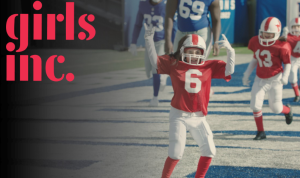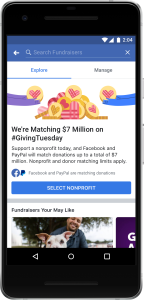Nonprofit raised nearly half a trillion dollars during 2022, according to the 2023 Giving USA Annual Report on Philanthropy, released this past June. But fundraisers face headwinds this year, in part, because overall the trend in giving is in decline, down 3.4% from 2021 to 2022.
In this environment, fundraisers need every advantage to capture donors’ attention and inspire response. One advantage, particularly in a capital or comprehensive campaign, is thoughtful campaign branding and messaging carried through marketing communications.
Assuming you are convinced that your next campaign deserves carefully constructed branding and messaging, where do you go from here?
There are steps to take, the people to involve and time needed to create branding that will take your campaign to the next level, according to Lori Woehrle, editorial director at Leapfrog Group during her session “Brand Your Capital Campaign for Success.”
Give yourself a year from the public launch date of your campaign to develop a theme, messaging and materials. It can be done in less time, but at a cost. You know the old saying: “You can have it done well, fast or efficiently. Pick two.” This saying applies, Woehrle told those at the session.
There are four major milestones in this process. You will need up to three months for research and messaging; up to two months for campaign identity (name/theme) and logo; up to another two months for writing and designing a case for support; and the remaining five to develop supporting materials, such as a major gift template, social posts and emails, a microsite, communications plan, campaign video and various appeals.
Milestone 1 — Research and Messaging
The first step is to conduct qualitative market research among different constituencies to get a good understanding of how they view the campaign. Interview about 12 people in a conversational manner that allows you to ask follow-up questions based their comments. Hear from organizational leadership, board members or the campaign committee, clients, donors, and community members.
Analyze your notes and find common concepts and phrases. Commonalities will help you shape a verbal identity for the campaign. Verbal identity is most importantly a positioning statement, or short paragraph that succinctly articulates the vision, purpose and meaning of the campaign. In effect, it is an elevator pitch of about three or four sentences.
Along with a positioning statement, create a short list of key messages and proof points. Key messages are the core elements from the positioning statement, highlighted and supported by facts (proof points).
This package — the verbal identity — is your campaign in text form, using the words and phrases that will find their way into all your campaign communications.
Milestone 2 — Campaign Identity: Name and Logo
Once your verbal identity is approved and polished, you can begin the process of identifying a name (or theme) for your campaign. Whether you create a name or theme is immaterial. It is simply the words or phrase you will use to identify the campaign.
Ideally you will land on a two- or three-word phrase as your campaign name, which can be followed by phrasing such as “The Campaign for Nonprofit A.” The name should carry meaning, align with your institution’s brand, be inspiring, and — if you are really lucky — provide a call-to-action for donors.
When it comes to logo development, keep it clean, simple, legible in digital form and visually express the central idea behind the campaign brand. It must work visually alongside the institution’s logo or mark.
Milestone 3 — Case for Support
Your case for support is the heart-center of your campaign. It is the statement of truth for campaign priorities, purpose, and outcomes. It must be visually appealing so that readers are encouraged to read through it. And when they reach the end, they must be so inspired that when you finally make an ask, they are eager to be part of your story and to give.
Naturally, the campaign brand leads the way in your case for support. Weave those key messages you crafted back in Milestone 1 throughout your case. Employ those powerful words and phrases you learned while conducting qualitative research.
Because the purpose of design is to encourage your audience to read the text, write — and get approval on — the text before moving to design. This way you avoid multiple rounds of messy text edits, which can easily introduce errors in the copy.
Your case needs to be highly visual and appealing to open and read. This means layering in a variety of beautiful and compelling images that cause a reader to feel. You want the reader to react. Emotion leads to inspiration, which leads to giving. Strong photos and graphics (along with well-written copy) will get you there.
Milestone 4 — Supporting Materials
Where you go from here depends on your campaign’s needs. There are many options to consider.
* Microsite: Your campaign will need a landing place on the web. Without this, your campaign will not appear valid to many donors and prospects. You can create a thin (meaning not a lot of pages deep) site separate from your organization’s site. Because a microsite has modest functionality, it can be built with simple and commonly available software, such as WordPress.
* Video: This media is so captivating that it is becoming a best practice for campaigns. It should be short (three minutes or less), focus on a compelling story and not fear having a strong emotional draw. The video script should pull from your case for support. You can show it at campaign events, push it out via email and social media, and post it on your website.
* Communications Plan: Ideally you will push out messages to various audiences on a regular cadence. Your campaign should be part of your regular magazine or newsletter. These opportunities to reach prospects and donors need to be organized in a plan that is straightforward, easy to follow and ensures you appropriately message all your audiences.
* Major Gift Package: As an item left with a prospect following a donor meeting, a major gift package should be flexible and provide more details than the case for support on your priorities. You might want separate “mini-cases” for each priority so that your major gift officers can customize the package before their meeting with a prospect. It shows respect for the prospect’s time and avoids watering down your message with superfluous information. A flexible package that can be customized by removing or adding inserts makes your gift officers’ jobs easier.












